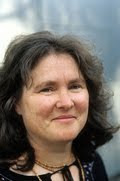 |
| The Island of the Colour-blind (Picador, 1996) |
The second half of this book was to do with a rare neurological disorder, called lytico-bodig, that occurs on Guam, an island which is part of the Marianas Islands. The disease causes Parkinsonism type symptoms in some families and motor neurone disease in others. No one knows the exact cause of the condition although some researchers speculate it could be to do with the islanders eating the seeds of the cycad plants which are endemic to the island. The seeds are toxic and need to be specially prepared before they are eaten. However, other researchers have disputed this hypothesis and think there may be a viral cause. Although no conclusions were reached the book examines all the theories and gives detailed accounts of the disease in many patients.
This book is fascinating reading for science students. Sacks manages to keep the medical jargon to a minimum and there are dozens of footnotes and references to his readings in this field. This book would be ideal to include as a non-fiction title for the PSSC English curriculum.

No comments:
Post a Comment